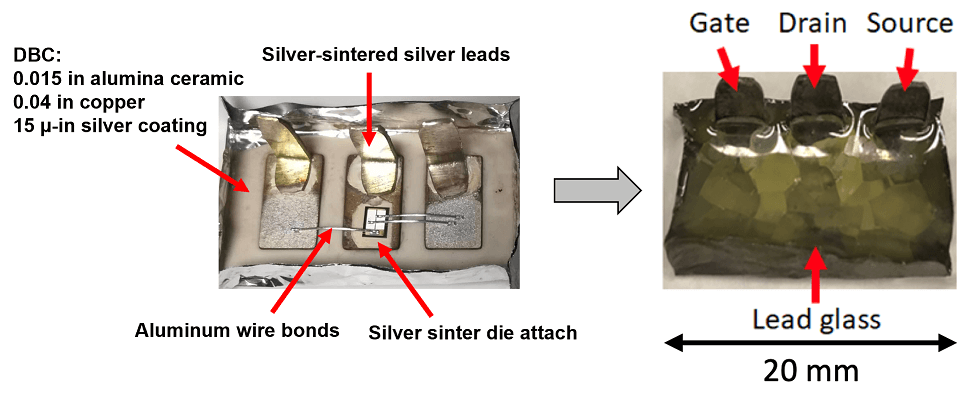LIBRARY
Characterization, Reliability and Packaging for a 300 °C SiC MOSFET

A three-terminal package is developed for high-temperature testing. Static characterization is performed for the custom package. Finally, reliability tests in the form of high temperature gate bias (HTGB) and high temperature reverse bias (HTRB) conditions are performed to determine the elevated temperature lifetime of SiC MOSFETs.
Fig. 1 shows the high temperature package created for reliability testing. A 1 kV SiC Wolfspeed CPM3-1000-0065B MOSFET die is selected for testing.
Fig. 2 shows the results for the HTGB and HTRB tests. These tests were designed in accordance to standards listed in JEDECs A108C and Automotive Electronics Councils (AEC) Q101 forms. Incremental static characterization was performed on the devices during the test. Every 100 hours, the devices were measured on the Agilent B1505A curve tracer. Failure was defined to be any characteristic outside of nominal datasheet values.
Although successful static characterization at 300° C supports the idea that short-term operation of SiC MOSFETs at high temperatures is possible, experimental results show that current generation SiC MOSFETs are not reliable at temperatures of 300° C. The devices quickly break down over a period of 300 hours when stressed with accelerated lifetime bias tests.























































































